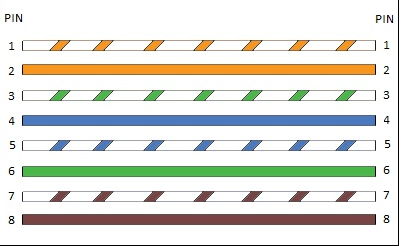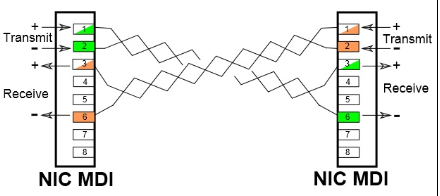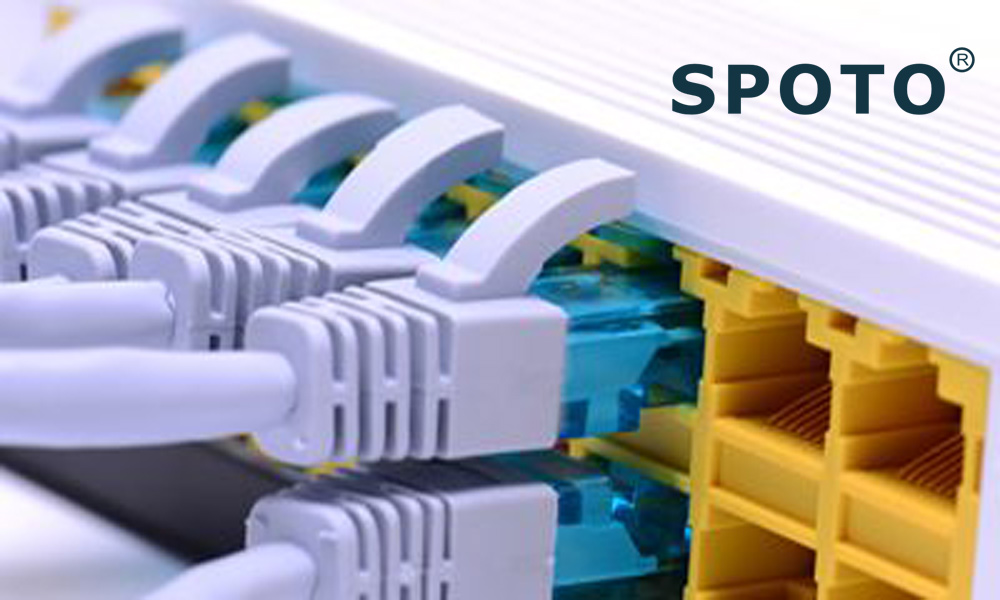Ethernet cables can come in two forms when it comes to wiring:
1. Straight-through cable
Both ends of this cable type have the same wiring (pin 1 at one end of the cable is connected to pin 1 at the other end of the cable, pin 2 is connected to pin 2, and so on):

This type of cable is used to connect the following devices:
· computer to hub
· computer to switch
· router to hub
· router to switch
Computers and routers use wires 1 and 2 to transmit data, and wires 3 and 6 to receive data.
Therefore, if you want to connect the two computers together, you need a cross cable.
2. Crossover cable
When using a crossover cable, the pair of lines can be interchanged, meaning that the different pins are connected together, the pin 1 on one end of the cable is connected to the pin 3 on the other end, and the pin 2 on one end is connected to the pin 6 at the other end. The other end (photo source: Wikipedia):

This type of cable can be used when you need to connect two devices that use the same wire to send and receive data. For example, consider connecting two computers together. If you use a straight-through cable with the same wiring at both ends, both computers will use lines 1 and 2 to send data. If computer A sends some packets to computer B, computer A will use wires 1 and 2 to send the data. This will cause problems because the computer wants to receive packets over wires 3 and 6 and your network will not work properly. This is why you need to use cross cables for such connections.
NOTE
Newer devices support automatic MDI-X to automatically detect and configure the required cable connection types. This eliminates the need to use a specific cable type between certain devices. Also, note that Gigabit Ethernet and faster standards use all four-wire pairs to transmit data in both directions at the same time.
Notice that SPOTO will update the latest cisco exam information. we also update some useful technical articles for the CCNA certification exam.
More Recommended Articles
3. New CCNP: How to Prepare in 2020?

 Join Telegram Study Group ▷
Join Telegram Study Group ▷














